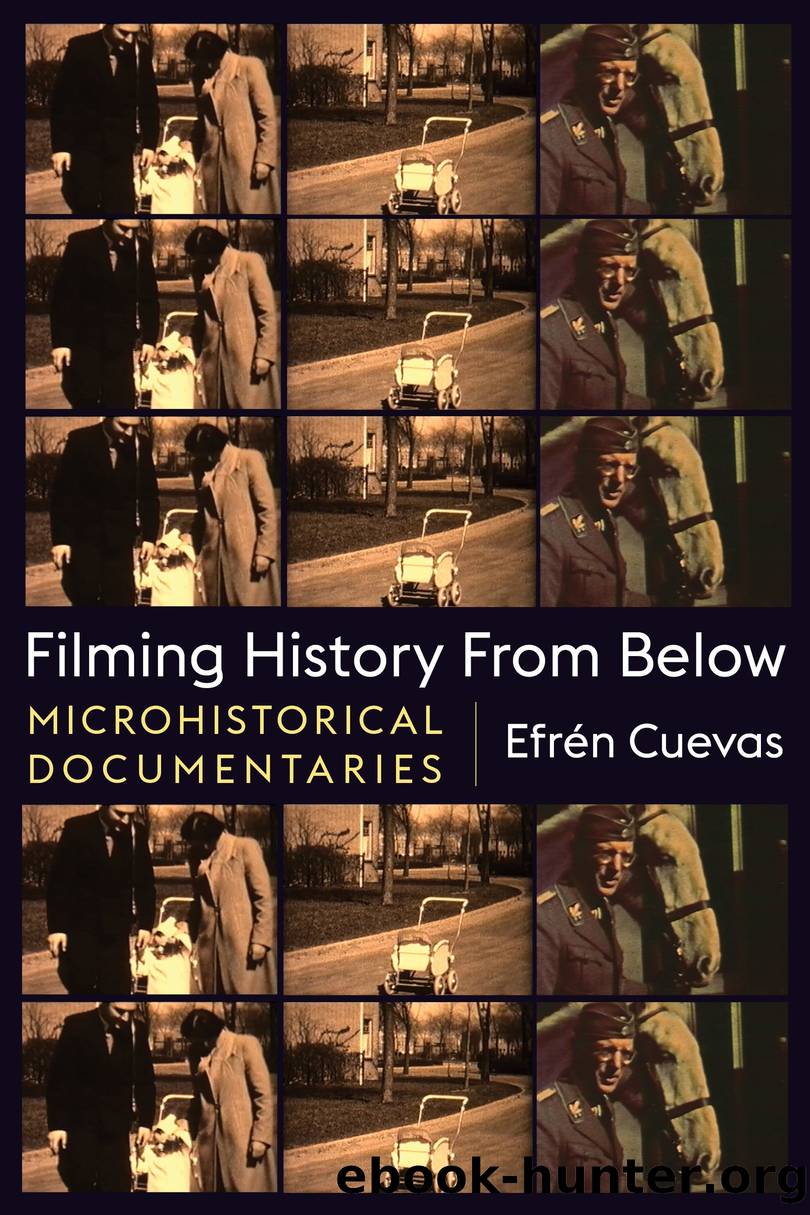Filming History from Below by Efrén Cuevas

Author:Efrén Cuevas
Language: eng
Format: epub
Publisher: Columbia University Press
6
IDENTITIES AND CONFLICTS IN ISRAEL AND PALESTINE
Israel: A Home Movie, For My Children, My Terrorist, My Land Zion, and A World Not Ours
The history of Israel and Palestine is characterized by a complex network of conflicting relationships, wars, and peace efforts that continue today with no sign of a conclusion. This troubled history has been reflected in numerous documentaries made mainly by Israeli filmmakers, but also by Palestinians. Some of these films focus on the current situation, others seek to explain the public history of the region (its âmacrohistoryâ), and still others offer approaches from a microhistorical perspective. In this chapter, I analyze films that fall into this last category, exploring the microhistorical approaches they take to the history of these peoples and the conflicts they continue to face.
In the diverse context of Israeli and Palestinian documentary production, it is not always easy to discern which films reflect a microhistorical approach, as there are many that deal with contemporary history that seem to fit into this category, since their perspectives bear little relation to public history. Two such possibilities are the well-known films Happy Birthday, Mr. Mograbi (Avi Mograbi, 1999) and Waltz with Bashir (Ari Folman, 2008), although on closer analysis neither of these films seems to qualify as microhistorical. With Happy Birthday, Mr. Mograbi, Avi Mograbi has made a very personal film about Israel that is rather hard to classify. Taking as its premise the countryâs fiftieth anniversary, the film adopts an essay style that ultimately dominates the narrative and pushes the historiographical perspective into the background. In Waltz with Bashir, Ari Folman presents a more explicit exploration of the past, focusing on the Lebanon War of 1982. Based on interviews conducted by the filmmaker, mostly with soldiers like him who took part in the war, the film is more about memory and trauma than about history, made with the visual freedom offered by animation, with its versatility for changing from a realist to a dreamlike register, and from present to memory. Although the film is based on the testimonies of anonymous soldiers recalling the war, Folman puts the focus less on the task of recounting the past than on the inner wounds caused by the war, on its protagonistsâ traumas, repressed memories, and processes of mnemonic recovery.1
Falling more clearly into the category of microhistory are the films that are analyzed in detail in this chapter: Israel: A Home Movie, For My Children, My Terrorist, My Land Zion, and A World Not Ours. Although they differ in various ways from the most paradigmatic cases of a microhistorical approach, all certainly offer a meaningful historiographical reflection articulated chiefly around the tension between macro- and microhistorical scales of observation. In a manner similar to the films on Japanese American incarceration analyzed in chapter 4, these five films show how different microhistorical approaches can examine the same historical events, although the historical period in this case is much broader, running from the 1930s through to the start of the twenty-first century. The
Download
This site does not store any files on its server. We only index and link to content provided by other sites. Please contact the content providers to delete copyright contents if any and email us, we'll remove relevant links or contents immediately.
Kathy Andrews Collection by Kathy Andrews(10520)
The remains of the day by Kazuo Ishiguro(7551)
Spare by Prince Harry The Duke of Sussex(4197)
Paper Towns by Green John(4169)
The Body: A Guide for Occupants by Bill Bryson(3801)
Be in a Treehouse by Pete Nelson(3212)
Harry Potter and the Goblet Of Fire by J.K. Rowling(3045)
Goodbye Paradise(2963)
Never by Ken Follett(2880)
Into Thin Air by Jon Krakauer(2701)
The Remains of the Day by Kazuo Ishiguro(2618)
The Genius of Japanese Carpentry by Azby Brown(2609)
The Cellar by Natasha Preston(2595)
Drawing Shortcuts: Developing Quick Drawing Skills Using Today's Technology by Leggitt Jim(2532)
120 Days of Sodom by Marquis de Sade(2438)
Architecture 101 by Nicole Bridge(2350)
The Man Who Died Twice by Richard Osman(2299)
Machine Learning at Scale with H2O by Gregory Keys | David Whiting(2291)
Fairy Tale by Stephen King(2069)
